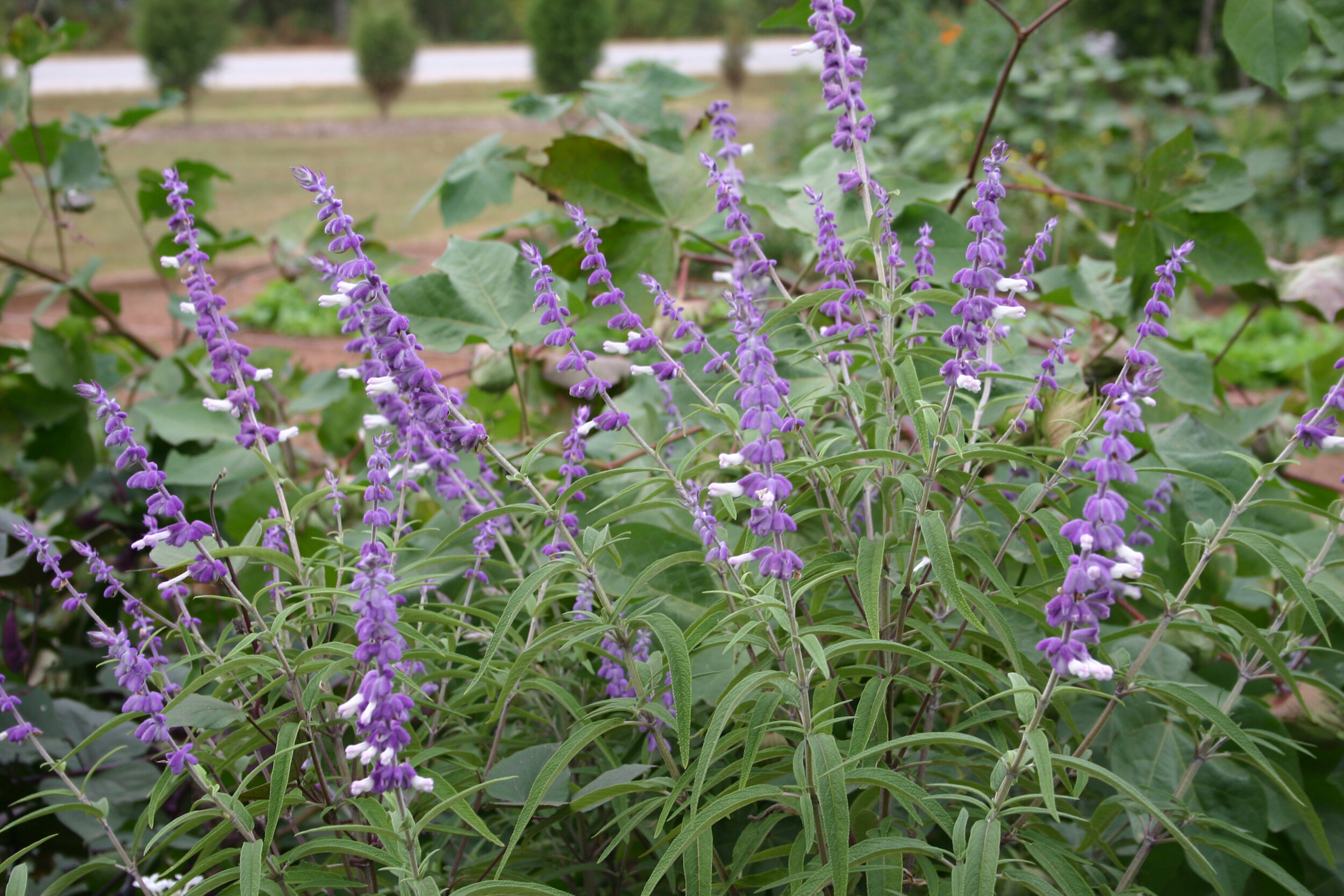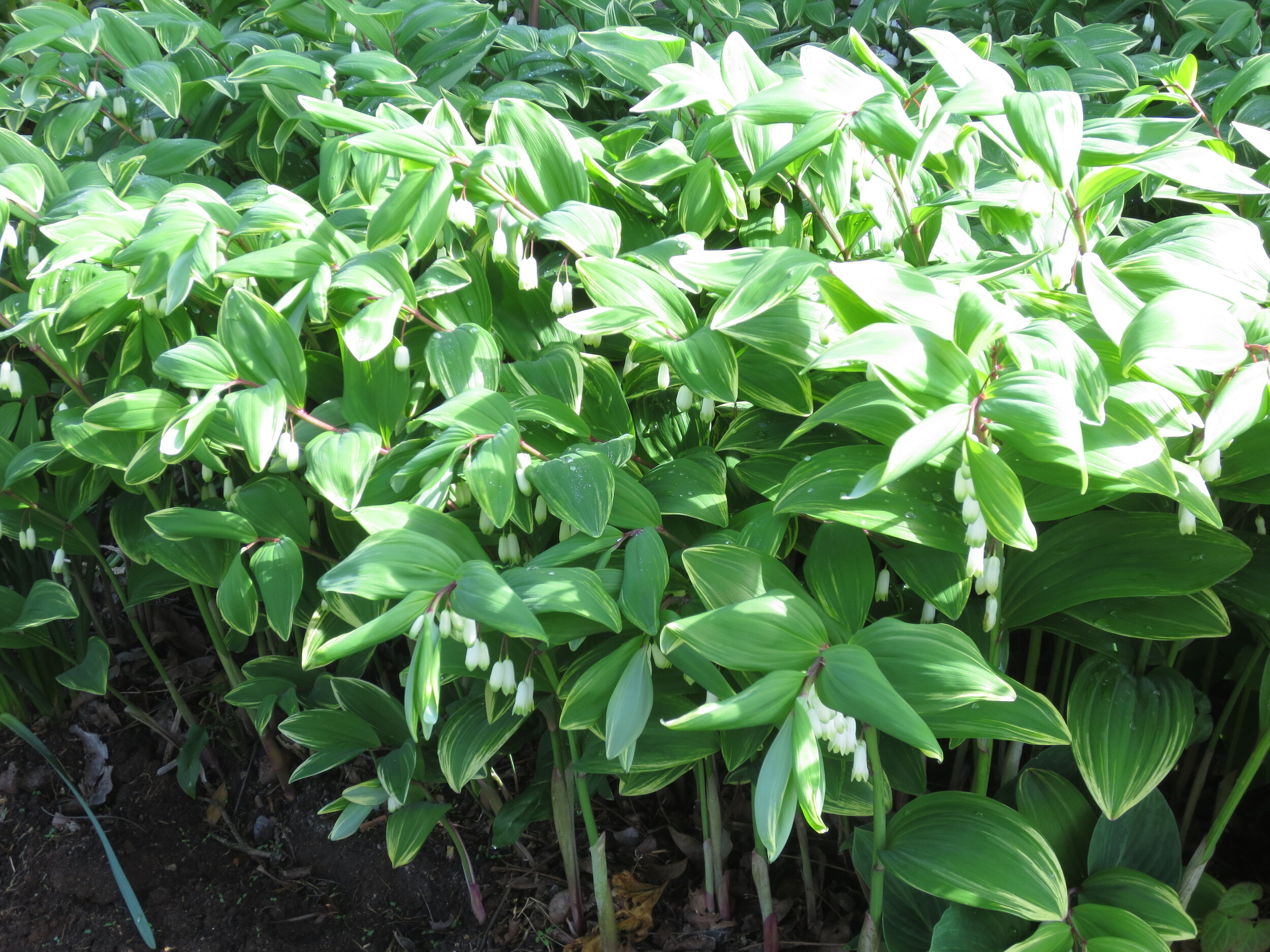I’ve never met a Salvia I didn’t like. Salvia leucantha, Mexican Salvia, is a star of the autumn garden. This herbaceous perennial grows in zones 7b to 10a. In the cooler zones, top growth is killed to the ground in freezing weather. It will remain evergreen or semi-evergreen in warmer zones. Either plant it in spring to ensure that it has a well-established root system before cold weather arrives or consider it an annual.
Mexican Salvia can each a height of three feet or more, making it perfect for the back of the flower border. ‘Santa Barbara’ is a dwarf form. Flowers occur at the stop of stems, so plants are best situated where shorter plants conceal their lower half. Their lanky structure means that plants may open up in the middle, and may even break in strong winds or thunderstorms. The best way to combat this problem is to prune plants back by half in late May. Onset of flowering may be delayed by a few days, but plants will be shorter and bushier. Don’t prune after mid-July or you risk removing flower buds.
Bloom spikes are either bicolor purple and white or solid purple. The first blooms of the bicolor varieties are sometimes solid purple, with the white appearing in later blooms. The narrow grayish, felted leaves give a hint that it is both heat and drought tolerant. These Salvias prefer a well-drained, neutral to moderately alkaline soil. All varieties attract hummingbirds, butterflies, and bees. Deer and rabbits rarely nibble them.
Salvias have square stems, which is a signal to gardeners that they are easily propagated from cuttings. Plant in swaths for an impressive fall display, especially when paired with yellow or orange flowers.





